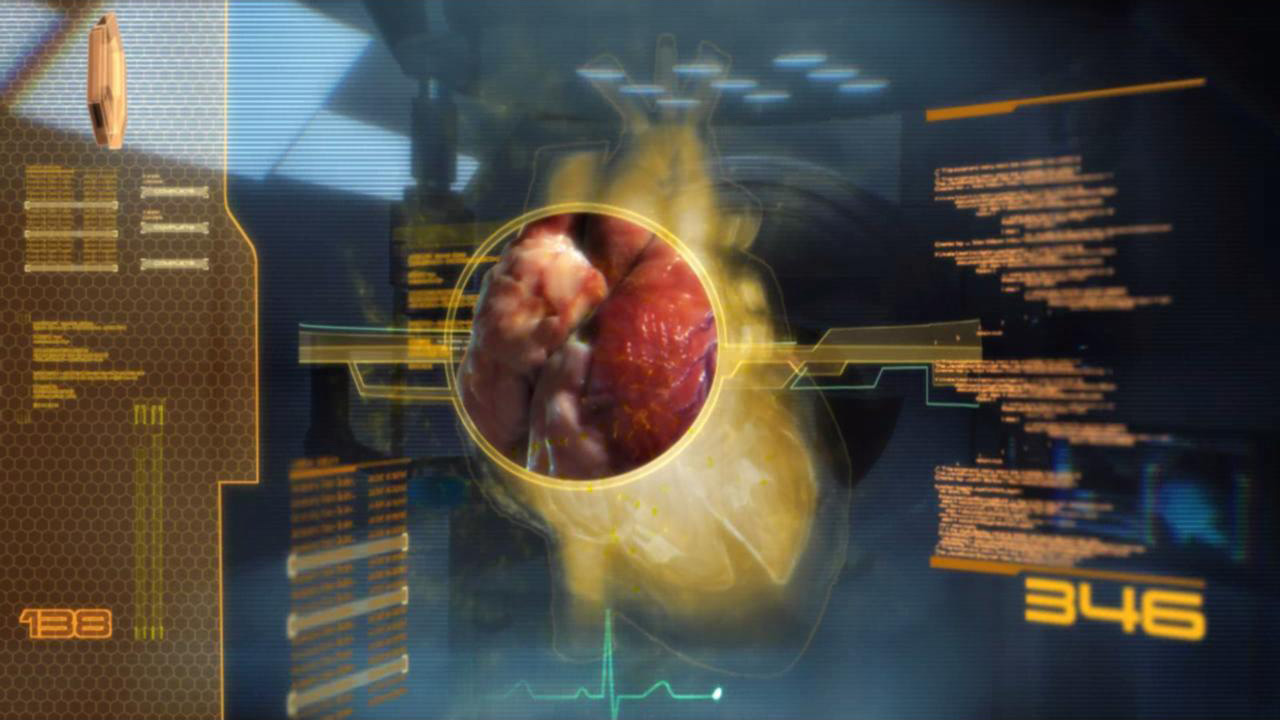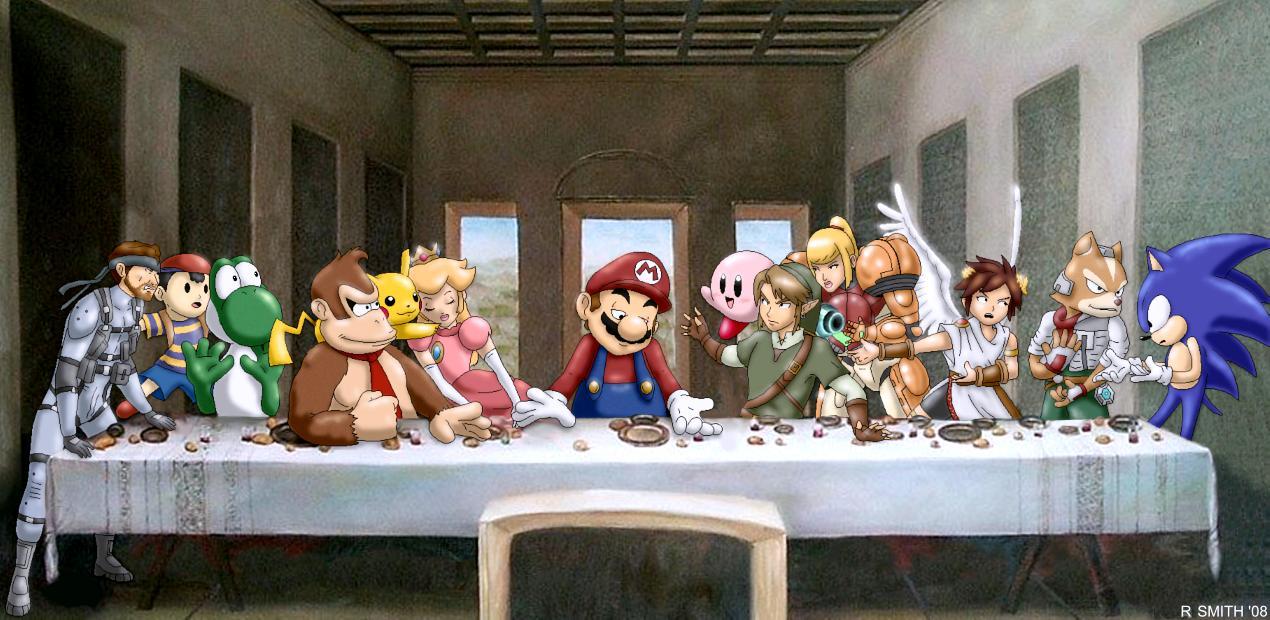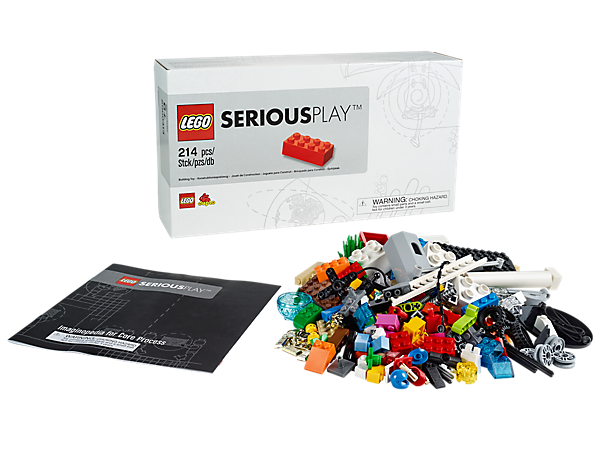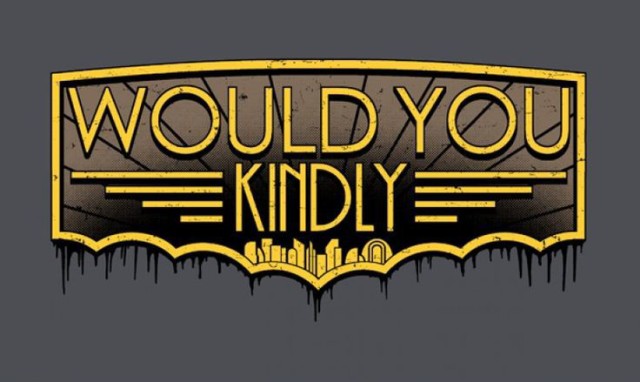In this piece, we analyze the recent new footage from The Last of Us Part II, and include a graphic breakdown of violence enacted in the footage, particularly violence against women. If you’d like to watch the footage for yourself, you may find it here.
Sony’s show at Paris Games Week was marked by reveals big and small, follow-ups, sequels, new properties, and excitement, but near the show’s end, things took a turn. Detroit, Quantic Dream’s cinematic story of android struggle, set a darker tone. With repeated, slightly differing looks at domestic violence, including the death of a young girl, Detroit took the show somewhere plenty of viewers may not have expected to go. But even that was overshadowed in a way by the show’s end.
In the show’s final moments, Jim Ryan proclaimed this to be a great time to be a gamer. Such excitement! Such drama! And then a mystery game was introduced. It’s prudent to note that while other games may have flashed early hints about the title, or listed the developer, here, we got nothing, only a slow move to: sinister nightscape filled with lushly rendered trees. A storm light up the sky. Sony Interactive Entertainment (which could mean so many things), the screen reads, and then: fire. A body dragged along the ground, arms bound. A braid; probably, then, a woman. This was our introduction to The Last of Us Part II, but we didn’t know it yet. We’re shown eviscerated bodies hanging from the trees, and then the bound body—revealed to be heavily muscled, defiant, yet terrified—is hanged as well, the camera lingering on the noose, the struggle, the bucket placed under her scrabbling feet. Another figure, female as well, obviously a leader, mutters over the hanged woman, penetrating her skin with the tip of a knife. Sin. There’s sin inside her belly. Perhaps that’s what’s dangling, bloody and far too real, from the other hanging bodies. Sin.
What is it? Who are these people? We still don’t know. But another woman runs up, slim, delicate, Asian. She’s grabbed and questioned; she spits at the leader. She’s thrown to the ground and one of her captors raises a hammer. The camera does not flinch away as he strikes her once, twice, three times, the bones in her arm visibly snapping, shifting, as she screams. Before the other man can break her right arm, from the night, arrows.
One of the bald men holding the smaller woman dies, arrows protruding from his body. She grabs the hammer, strikes the other. A scuffle ensues amongst the three women; the hanged woman manages to snag the leader with her legs, choking her; the Asian woman snatches up the hammer and buries it in the leader’s head. The leader dies. The injured woman falls, blood soaking her body. The hanged woman swings, kicking her bucket over; her body bucks and flails. The hidden archer appears, androgynous, slim, clad in bulky clothing; though reluctant, they are convinced to cut down the hanged woman.
And then: the infected, their heads abloom with an alien disease. Only then do we have some sense of what we are seeing: The Last of Us Part II, starring…? We have only speculation. Who are these people? What’s happening? Why must they suffer so?
It’s suffering for the sake of suffering. Or, at least, this is what seems to be the message when we’re presented with such a decontextualized scene–a scene that provides us with no context with which to understand the violence we see on the screen. A scene that simply enacts violence against women’s bodies in a multitude of ways. And to what end? To shock? To awe? Just because?
Whatever the reason, these decontextualized acts of violence are sadistically exploitative, they are gendered, and they perpetuate the fetishization of violence against women, considering the bodies on which this violence is performed. Because, ultimately, we see two types of bodies brutalized–the muscled hardbody of the woman who seems to be, at least in terms of the trailer, our main character, our focal point and the petite hyperfeminine Asian body of the woman whose arm is sickeningly crushed. Both of these bodies are already othered–through their race, through their gender performance–and both of these bodies, then, are graphically and visually punished for their already othered positionalities. But why? To establish the stakes of the violent world in which Joel and Ellie live? But why represent these stakes through such graphic and hyperbolic acts of violence against women? We already know this world is violent–we’ve been here before. So why, then, represent this violence by grounding it in and enacting it on the bodies of women? Is there really no other, no better, way to establish these stakes? Is there really no other way to sell a game?
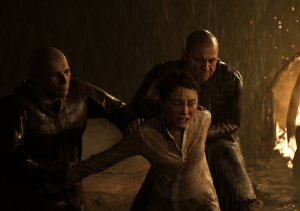 But it’s okay, they seem to be arguing, because look–it’s another woman perpetrating these atrocities. It’s another woman seeking to plunge her knife into the hanged woman’s stomach. It’s another woman who has the slight woman’s arm crushed. As gamers, we’re used to the opposite; games are full of men brutalizing men. Even during this show, we see it, but it’s contextualized, in its own sense. We know what to expect. A trailer opens with a shot of a soldier? We know we will see men shot, and we will see a spurt of blood fan across the screen. We don’t have to know it’s the latest Call of Duty; dozens of games have prepared us for this. The cues are there.
But it’s okay, they seem to be arguing, because look–it’s another woman perpetrating these atrocities. It’s another woman seeking to plunge her knife into the hanged woman’s stomach. It’s another woman who has the slight woman’s arm crushed. As gamers, we’re used to the opposite; games are full of men brutalizing men. Even during this show, we see it, but it’s contextualized, in its own sense. We know what to expect. A trailer opens with a shot of a soldier? We know we will see men shot, and we will see a spurt of blood fan across the screen. We don’t have to know it’s the latest Call of Duty; dozens of games have prepared us for this. The cues are there.
We have no cues for The Last of Us Part II. We’re given nothing, so those who defend the violence in the trailer by saying the first entry in the franchise was violent are both correct and not. The game was violent, but generally, it was a violence earned through pain, through struggle, through story. We understood Joel’s choices, even if they weren’t always the choices we would make. We felt Ellie’s suffering. We watched Sam and Henry, knowing how that would end, and maybe we wept, but we understood how these moments could feel necessary in such a world. Forbes’ Erik Kain offered the reminder that in the first game, we had poignance. We had something worth fighting for.
Here, we had nothing. We had torture, and sin, and the delicate bones of a woman snapping beneath a hammer while another woman watches, straining against a noose.
So, then, maybe we did have something–we had power. Or, that is, we had a representation of it. We had power the way it is often wielded against women. Power used as a form of oppression, as a form of control, as a form of discipline and punishment. And we have power as it is, in particular, manifested in patriarchal networks of representational control. We have power that is centered–through the camera’s gaze, through the point of the knife–on a woman’s womb. On a woman’s “sin.” That kind of power needs no context. That kind of power simply is wielded against women with no explanation. No justification. It just is.
At Polygon, Julia Allen asks: “…here, the promise is almost exclusively gore. There’s an argument to be made that the trailer raises an enticing question — Why are these women being attacked? — but that mystery is both too familiar and too broad.” Women are bodies to be sacrificed; that is something so many of us know, and here, they were sacrificed to sell a game. To pitch potential. It’s no accident that the hammer-wielding men are hardly shown; here, they are objects, secondary, not important. They die, but who cares? It’s the protracted suffering of the women that’s used as a demonstration of the graphical leaps in the sequel.
In that same Polygon piece, Allen writes: “Neil Druckmann, creative director at Naughty Dog, told Shack News then that the violence players would encounter in The Last of Us wasn’t perfunctory, but served a purpose.” That promise, however, isn’t on display here. We can speculate about the identity of these characters, but we don’t know. We can make guesses at the situation, but here, it is perfunctory. It simply exists, free-floating, divorced from context, proof of… something.
For us, that looks very like proof of a beautiful and realistic continuation of so much that we see far too often in games and other media: the sacrifice of women for the profit and entertainment of men. It is not proof that women are strong. That they can endure pain. We don’t need any more proof of that. And that’s never the point. It’s not about the women–it’s about the graphics. It’s not about their pain–it’s about their performance of it. It’s about the performance of women’s pain for the entertainment of men.
Trust us, they say with this trailer. Trust that we will develop something around it. But this is all we have, these moments of brutality. But trust the brutality, they say. It matters, it means something. Because Jim Ryan says that this violence is just a way for the studio to “portray a game that will be rated as suitable for adults to play and that’s what we did.” It’s for adults. Mature content for mature audiences. And, for Ryan, it’s not the content that needs to shift, but the audience–because, for him, what matters is that “the right content is played by the right people–of appropriate ages in particular. I thought The Last of Us Part 2 was a great way to end the show and I feel very good about it.” It’s a great way to end the show, it’s something to feel good about, and if you don’t like it then you’re just not the right audience–trust us about this, they say.
Like Erik Kain, we enjoy games of all sorts, and that includes games that include, even hinge on, violence. Violence in narratives can offer a sobering look at the human condition, and a way to consider experience, morality, and horror from the safety of one’s own living room. But this footage offered nothing but a sobering look at profit margins… and, perhaps, the stark divide amongst members of the broader games industry and community.

